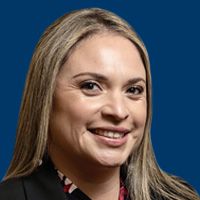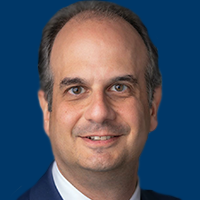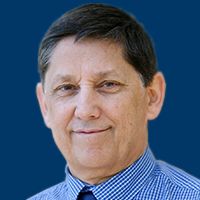Dr Costa on MRD-Modulated Post-ASCT Quadruplet Induction in Newly Diagnosed Multiple Myeloma
Luciano J. Costa, MD, PhD, discusses data on the use of minimal residual disease responses to modulate quadruplet induction therapy following autologous stem cell transplant in newly diagnosed multiple myeloma.
Luciano J. Costa, MD, PhD, associate director, clinical research, O’Neal Comprehensive Cancer Center, University of Alabama at Birmingham (UAB), discusses data on the use of minimal residual disease (MRD) responses to modulate quadruplet induction therapy following autologous stem cell transplant (ASCT) in newly diagnosed multiple myeloma.
The phase 2 MRD response-Adapted Sequential ThERapy (MASTER) trial (NCT03224507) evaluated the combination of daratumumab (Darzalex), carfilzomib (Kyprolis), lenalidomide (Revlimid), and dexamethasone (Dara-KRd) in patients with newly diagnosed multiple myeloma. This was followed by ASCT and up to 4 cycles of Dara-KRd.
MRD responses were identified with next-generation sequencing and were used to inform the duration of Dara-KRd post-ASCT in patients who displayed MRD negativity in 2 consecutive assessments. A total of 123 patients were enrolled onto the study. This included 53, 46 and 24 patients with 0, 1 and 2+ high-risk chromosome abnormality (HRCA), respectively.
The final analysis of the MASTER trial was presented at the 2023 European Hematology Association Congress. At a median follow-up of 42.2 months, 71% of the overall patient population had transitioned to treatment-free observation and MRD surveillance (MRD-SURE), Costa reports. Of these patients 73% remained MRD negative without continued treatment and 52% of MRD evaluable patients had sustained MRD negativity.
Overall, patients with 1 HRCA experienced comparable responses to patients with 0 HRCA, Costa continues. The 3-year progression-free survival (PFS) rates were 88.4 % in the 0 HRCA group, 78.9% in the 1 HRCA group and 50.0% in the 2+ HRCA group. Three-year overall survival (OS) rates were 94%, 92% and 75%, respectively, in these groups.
Although 23 patients in the MRD-SURE population experienced disease progression or MRD resurgence without progression, , the risk of progression was generally low, Costa says. The 2-year cumulative risk of disease progression for patients with 0, 1 and 2+ HRCA were 9%, 9%, and 47%, respectively, he adds. Notably, the OS rate was 100% in patients 18 months after resuming treatment. These outcomes showed that reinstitution of treatment was effective in most patients with MRD resurgence without biochemical or clinical progression, Costa concludes.



